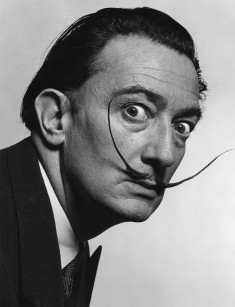
Salvador Dali: biography
Salvador Dalí was born on May 11, 1904, into a wealthy family of a Catalonian notary Salvador Dalí Cusí. The parents had already gone through the death of their first child, Salvador, who died at two because of brain inflammation. Eventually, they decided to give the same name to their second son; the name means “Savior” in Spanish.
The mother, Felipa Ferrés, patronized her son and pampered him while the father was strict to the boy. Salvador was a capricious and wayward kid. When he learned the truth about his deceased brother at the age of five, he felt burdened by that fact; it made a strong impact on his mental state.
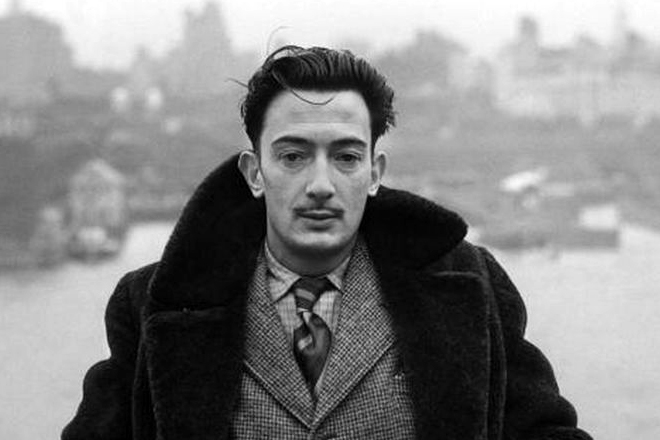
In 1908, Dalí’s sister, Anna Maria Dalí, was born. She became Salvador’s close friend.
From the early childhood, the boy took up painting, and he was pretty good at it. He had a workshop in a utility room and spent there hours, practicing art.
Art
Although Salvador’s behavior and academic results were bad, the father took his son to the local artist Ramon Pichot to learn painting. In 1918, the young man’s first exhibition was held in Figueres. Dalí was inspired by the suburban landscapes and presented them in his works. Salvador was always a great patriot of Catalonia.
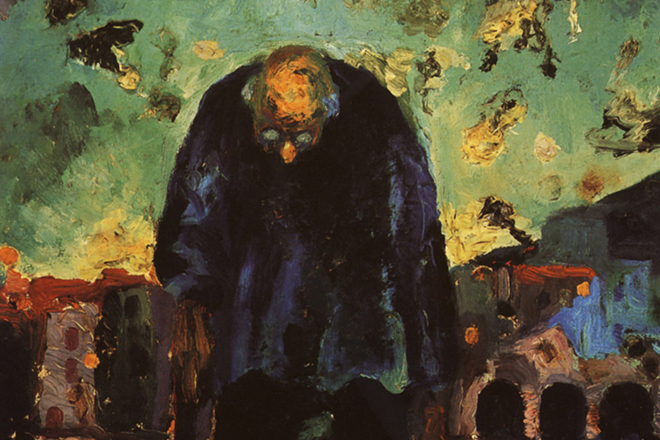
In the early works, one can see the young artist was working hard on impressionist, cubist, and pointillist techniques. Under the guidance of Professor Juan Nunez, Dalí created Portrait of Grandmother Ana Sewing, Crepuscular Old Man, and so on. At this time, Salvador took an interest in European avant-garde and read Freud’s and Nietzsche’s works. He also wrote short stories for a local magazine and illustrated them. Thus, Dalí was a famous figure in his home city.
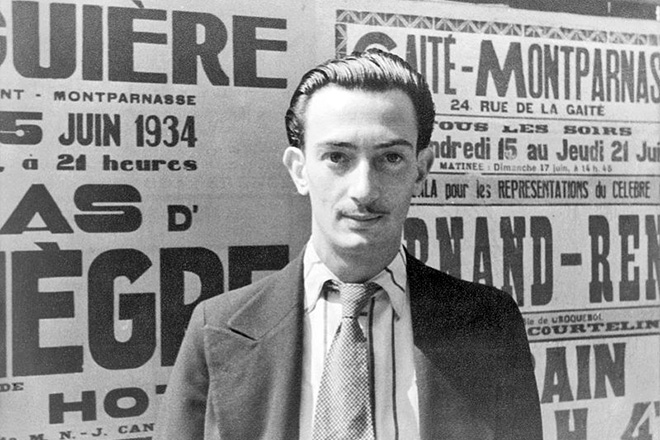
When the young man turned 17, the family had to face a great loss: the 47-year-old mother died of cancer. Dalí’s father was wearing black for his wife for the rest of his life. Salvador became obnoxious: he entered the Real Academia de Bellas Artes de San Fernando and began to behave eccentrically to teachers and students. The arrogant dandy’s tricks triggered the academy professors’ outrage, and Dalí was expelled from the academy twice. Nevertheless, young Dalí managed to establish contacts with important people in Madrid.
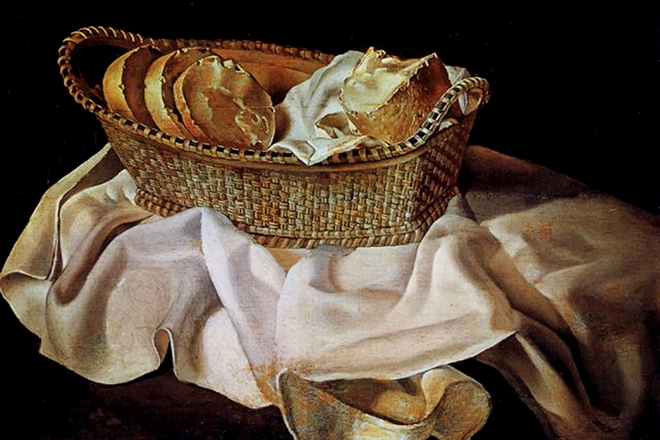
Federico García Lorca, Pablo Picasso, and Luis Buñuel became the artist’s friends; they affected Salvador’s artistic development. However, the young men were not united by art only. García Lorca did not hide he was gay, and contemporaries even claimed they had an affair. Still, Salvador was heterosexual, even though his sexual behavior was somehow weird.
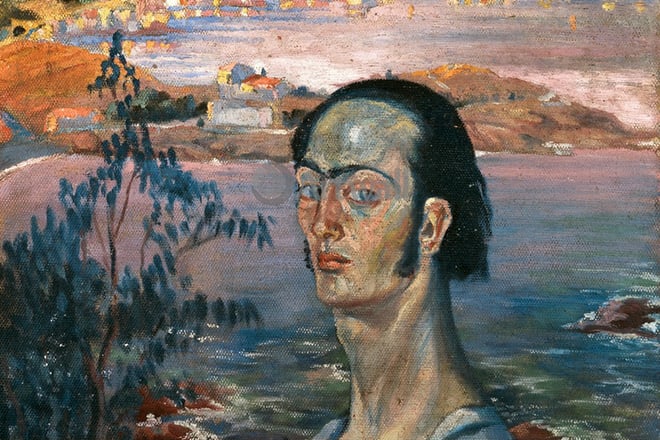
The scandalous behavior and lack of academic education did not prevent Salvador Dalí from becoming famous all over the globe in several years. Port Alguer, Back the Girl, Girl at the Window, Self-Portrait with Raphaelesque Neck, and Portrait of My Father were among the paintings of that time. The Basket of Bread was event presented at the international exhibition in the USA. The artist’s sister Anna Maria became the primary model for female characters in the paintings of this period.
Best paintings
The Persistence of Memory is the first famous work of the artist. One can see the liquid clock flowing down the table on the background of the sand beach. Nowadays, the painting is stored in the Museum of Modern Art, the United States; this masterpiece is believed to be the most popular work by Dalí.
Gradually, the artist’s lover Gala began to assist him with exhibitions in London, New York, and Spanish cities.
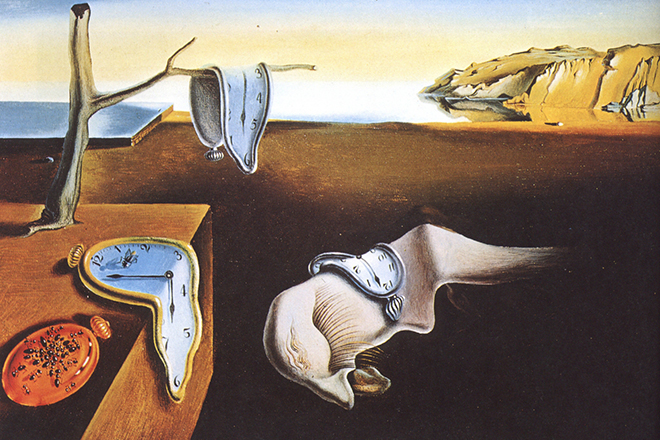
The art patron Charles, Vicomte de Noailles, noticed the genius and bought his paintings at a pretty high price. The lovers purchased a good house near Port Lligat not far from the sea.
The same year, Salvador Dalí took an important step to his future success: he joined surrealists. However, the eccentric Catalonian did not fit in there as well: he was a black sheep among many rebels, such as André Breton, Jean Arp, Giorgio de Chirico, Max Ernst, and Joan Miró. He argued with everyone and eventually began to promote the idea: “I am surrealism.”

When Hitler gained the power in Germany, Dalí had unambiguous sexual fantasies related to the politicians and expressed them in his art; the artist’s colleagues were outraged. As a result, before the Second World War, Salvador Dalí broke up with the group of the French artists and moved to America.
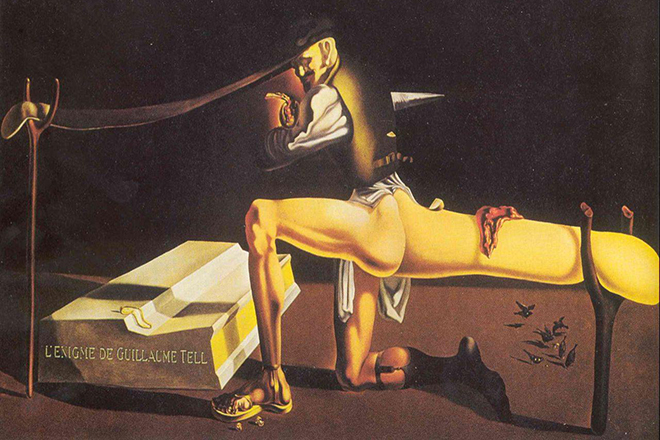
During the surrealist period, he contributed to Luis Buñuel’s An Andalusian Dog that was quite popular among the audience and also worked on another movie made by his friend, Age of Gold. The painting The Enigma of William Tell became the most famous work of that time: the young artist pictured the leader of the Soviet communist party with a large naked buttock.
Among dozens of paintings exhibited in Great Britain, the USA, Spain, and Paris, Soft Construction with Boiled Beans (Premonition of Civil War) stands out. This work appeared right before the civil war in Spain escalated; Aphrodisiac Dinner Jacket and Lobster Telephone pertain to the same period.
In 1936, when Dalí visited Italy, the artist was obsessed by the Italian Renaissance art. Some academic traits could be found in his works; they contradicted the surrealist principles. Metamorphosis of Narcissus, Portrait of Sigmund Freud, Autumnal Cannibalism, and Spain were the significant paintings of that time.
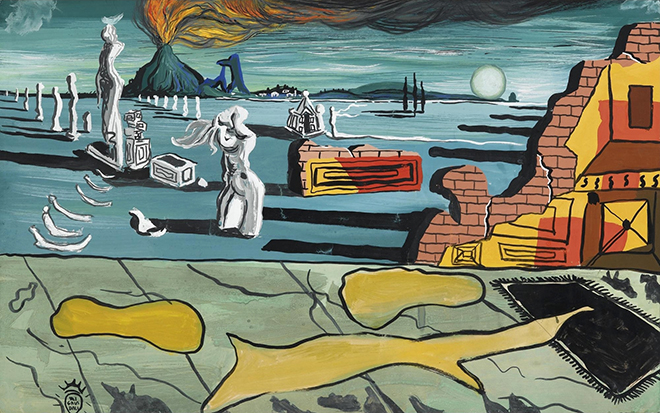
Dream of Venus is considered to be the last surrealist painting; it appeared in New York. In America, the artist not only worked on paintings but also created posters, designed stores, and collaborated with Disney and Hitchcock in movie graphic presentation. Besides, he wrote his famous autobiography The Secret Life of Salvador Dalí that proved to be bestselling immediately.
The last years
In 1948, Salvador Dalí returned to Spain, Port Lligat, and created The Elephants that presented the post-war pain and emptiness. Apart from that, after the atomic bombings in Japan, the genius introduced new motives: he drew attention to atoms and molecules which manifested itself in Leda Atomica and Splitting of an Atom. Critics called these paintings the examples of mystical symbolism.
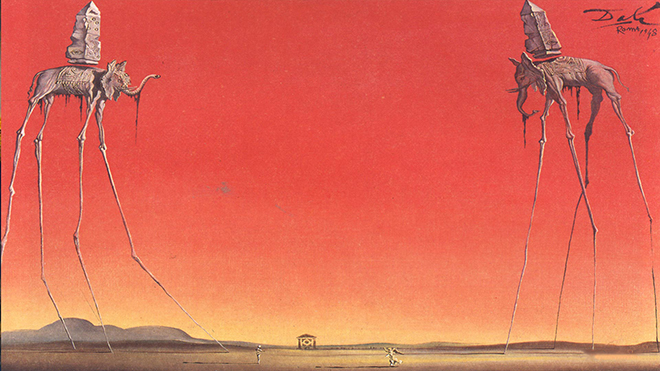
From that period, Dalí began to execute paintings on religious themes: The Madonna of Port Lligat, The Sacrament of the Last Supper, Crucifixion (Corpus Hypercubicus). Even the Vatican approved of some works.
At the end of the 1950s, Dalí’s friend, a businessman Enric Bernat, offered the artist to create a logo of the Chupa Chups lollipop company. Salvador created the logo that pictured a mayweed; the renewed version is still used today by the company designers.

When it came to fresh ideas, the artist was fertile; it was the source of sufficient income. Soon, Salvador and Gala met the trendsetter Coco Chanel; they were friends until she died.
Dalí’s peculiar image was created in his youth; the artist’s handlebar mustache became his trademark. Salvador Dalí was the face of his epoch; there was a cult of the artist among people.
The genius was constantly shocking public. He often took pictures with unusual animals; once, Salvador Dalí went for a walk with an ant-eater. Many popular magazines published the photos proving that.
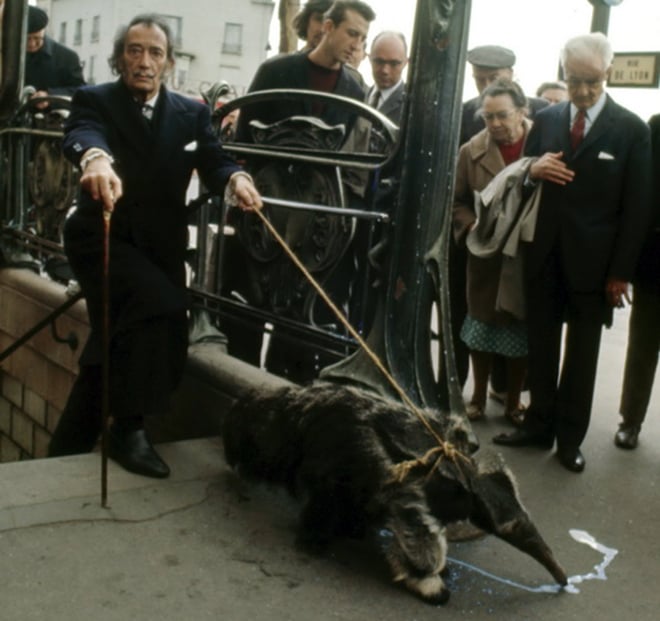
The decline of the artist’s career began in the 1970s: his health condition deteriorated. Still, Dalí continued to generate new ideas. At that period, he took an interest in stereoscopical painting and created Departure of the Fisherman and Holos! Holos! Velázquez! Gabor! The Spanish genius started building a large house museum in Figueres named Castle of the Winds; he planned to have the majority of his paintings stored there.

In the early 1980s, Salvador Dalí received many prizes and awards from the Spanish government; he became an associate member of the Académie des Beaux-Arts of the Institut de France in Paris. When Dalí’s last will was announced after his death, it was discovered the eccentric artist wanted his fortune ($10 million) to be left to Spain.
Personal life
1929 was marked with dramatic changes in Salvador Dalí’s life as well as the life of his relatives: the artist met the love of his life, Elena Ivanovna Diakonova, an immigrant from Russia and the then wife of the poet Paul Éluard. The woman called herself Gala Éluard; she was ten years older than Salvador.
After the first meeting, Dalí and Gala never separated. The artist’s father and sister were appalled by Salvador’s choice; Dalí Sr. deprived his son of any financial support, and Anna Maria broke all artistic connections with her brother. The lovers settled in Cadaqués and lived in a small shack without conveniences; this is where Dalí began to create his immortal masterpieces.
Three years later, Salvador and Gala married officially; in 1958, the church wedding took place. The couple lived happily for a long time. However, at the beginning of the 1960s, there was a discord between them. Aged Gala wanted carnal pleasures with young men, and Dalí took comfort among young favorites. He bought a castle in Púbol for his wife; he could visit her there only by the woman’s consent.
For eight years, the model Amanda Lear was Salvador Dalí’s muse. Their relationship was purely platonic: the artist could watch his passion for hours and enjoy her beauty. Amanda’s career destroyed their affair, and Dalí did not hesitate to break up with her.
Death
In the 1970s, Salvador’s mental disorder worsened. The man was exhausted because of hallucinations; he suffered from excessive psychotropic drugs prescribed by medics. Doctors rightly believed Dalí suffered from schizophrenia with Parkinson's disease.
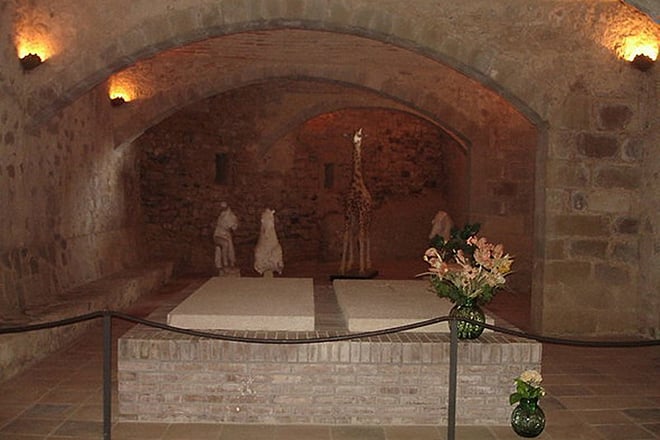
Gradually, the disease began to deprive Dalí of the ability to hold a brush in his hand and create new paintings. The death of his beloved wife in 1982 struck the artist down; he had pneumonia and was hospitalized. Seven years later, the old man’s heart let him down: on February 23, 1989, he died of myocardial failure. Thus, the love story of the artist Dalí and his muse Gala finished.





